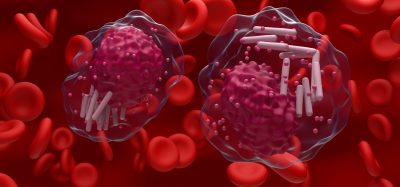Heat-resistant enzymes for cost-effective drugs
Posted: 5 November 2018 | Iqra Farooq (Drug Target Review) | No comments yet
The mechanisms and actions of heat-resistant enzymes are being investigated to aid better, more cost-effective drug design…


A recent study looked to one of the most essential enzymes in medicine to aid better, and more cost-effective design of drugs.
The research was co-authored by Dr Nitin Jain, UT Biochemistry and Cellular and Molecular Biology Associate Professor, and graduate student Sara Lemmonds. It focused on Cytochrome P450, an enzyme that occurs naturally in the body and other environments, and one that is critical in metabolising over 90 percent of pharmaceutical drugs.
Enzymes are molecules that aid in speeding up chemical reactions in cells. The body homes thousands of enzymes that all perform various roles to enable healthy and proper functioning, such as digesting fats, and breaking down sugars and glucose.
When a drug is administered, it is usually not all used by the body, and can become toxic.
“It is P450’s job to bind with the leftover drug in the liver to ensure that it is safely excreted,” explained Lemmonds.
P450 is able to remain stable under high pressure, and is found in hot springs and volcanic deposits, showing normal function despite the extreme pressures and temperatures.
“The chemical reactions produced by human P450 enzymes are more efficient when they occur at increasing temperatures,” said Prof Jain.
“By better understanding the relationship between flexibility and high temperature, scientists can engineer improved P450 enzymes targeted at biotechnology applications and designing better drugs for humans, producing them en masse and making them more cost effective.”
The team collected thermophilic bacteria from hot springs, and isolated the P450 enzyme. They analysed the enzyme using spectroscopy and neutron scattering, two techniques based in magnetism, to help understand between flexibility and thermal stability.
“There could be other enzymes that are as flexible at higher temperatures than P450, or that can become as flexible through simple mutations. If so, knowledge gained from future studies on them could then be used to target specific processes in the body, treat disease, or make new chemical products,” said Lemmonds.
The study was published in the Proceedings of the National Academy of Sciences.
Related topics
Biologics, Drug Discovery, Drug Targets, Enzymes, Research & Development, Therapeutics
Related organisations
The University of Texas at Austin
Related people
Dr Nitin Jain, Sara Lemmonds








